There's no fame, fortune or glory in writing a daily (volunteer) Bug Squad blog.
It's about the insects. It's always been about the insects, from honey bees to bumble bees, to butterflies, to dragonflies, to praying mantises and more.
Why? Just call it a fascination for insects, which evolved some 400 million years ago. "Three-quarters of all known animals are insects, a staggering 1 million species in total with an estimated 4 to 5 million yet to be discovered," according to a November 2015 article in New Scientist. "By contrast, there are fewer than 70,000 vertebrate species. Harvard University entomologist Edward O. Wilson has suggested there may be as many as 10 quintillion insects alive at any one time – that's 1018, or more than a billion for each person on the planet. They have colonised every continent, including Antarctica. They can live in air, land and water. They even live on us – lice evolved as soon as there was hair and feathers to set up home in. They are the kings of the arthropods – animals…"
I began writing the Bug Squad blog (at the invitation of Pam Kan-Rice) on the UC Agriculture and Natural Resources (UC ANR) website on Aug. 6, 2008, and have written it every night, Monday through Friday, never missing a single night of posting. Today that amounts to 4020. Along the way it's been named the No. 4 "bug blog in the world" (there aren't that many of us!) And, it has won some international awards. My photos have landed on the covers of several scientific journals and popular magazines, and in a few scientific books and children's books (all donations).
My photography has also resulted in thousands of copyright infringements. One man in Austria falsely claimed one of my images and was selling it on four stock photo platforms, including Getty Images. Others deliberately erase the copyrights and steal the images for their commercial purposes.
It's fun until it isn't.
Where do I take the images? Almost all are from our family's pollinator garden. My gear includes a Nikon Z7 mirrorless camera, a Nikon D800, a Nikon D500, a Canon AE1, coupled with half-a-dozen macro lenses. It's exhilarating to capture an image of a honey bee in flight, a monarch butterfly laying an egg, a dragonfly catching prey, or even to go eye-to-eye with a Western yellowjacket.
I don't poke 'em, prod 'em, or pin 'em. I am a guest in their habitat.
So, in 2023, "These are a few of my favorite things" (thanks, Oscar Hammerstein II and Richard Rodgers):
Attached Images:
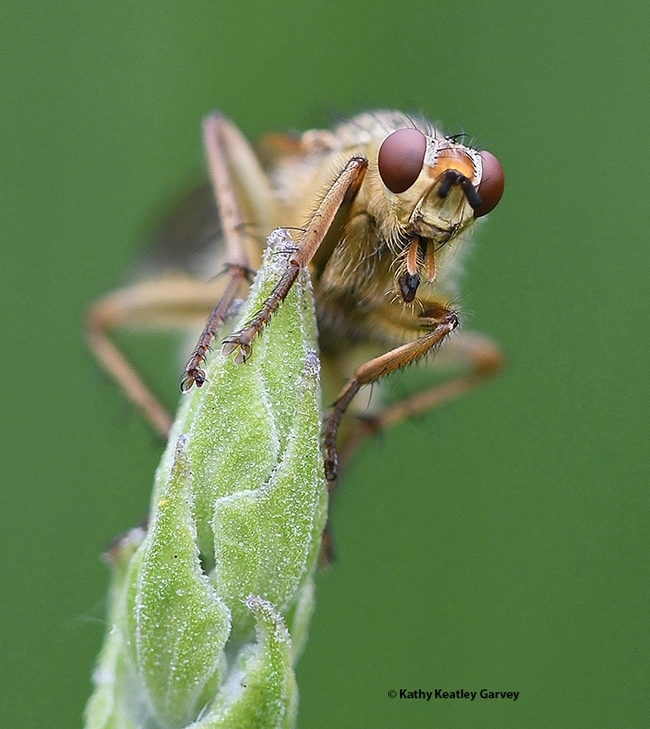
A golden dung fly, Scathophaga stercoraria, peers at the photographer. (Photo by Kathy Keatley Garvey)
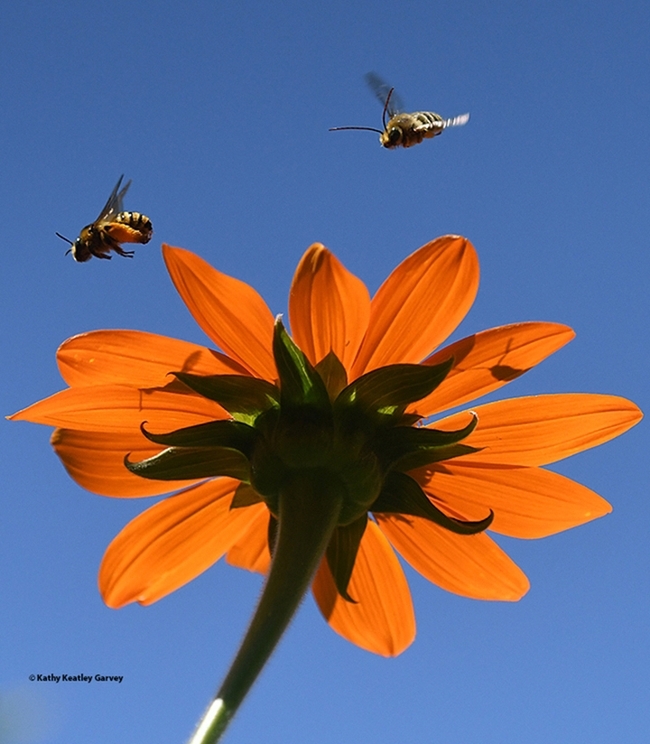
Two native bees, Melissodes agilis, buzz over a Mexican sunflower, Tithonia rotundifola. (Photo by Kathy Keatley Garvey)
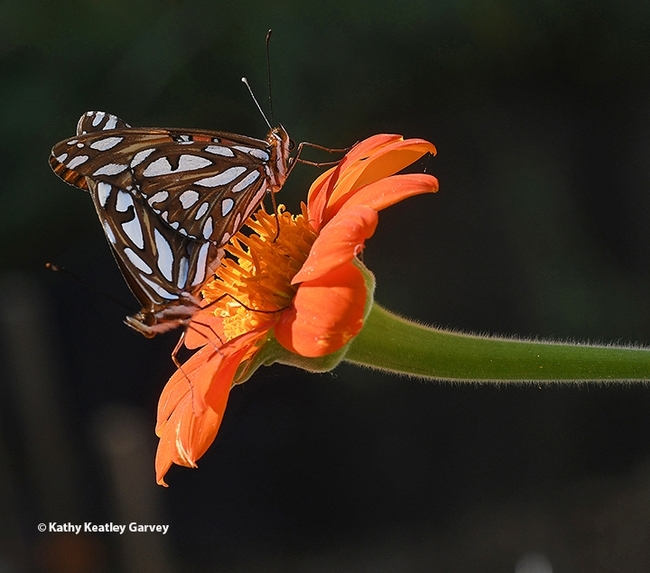
Two Gulf Fritillaries, Agraulis vanillae, keeping busy. (Photo by Kathy Keatley Garvey)
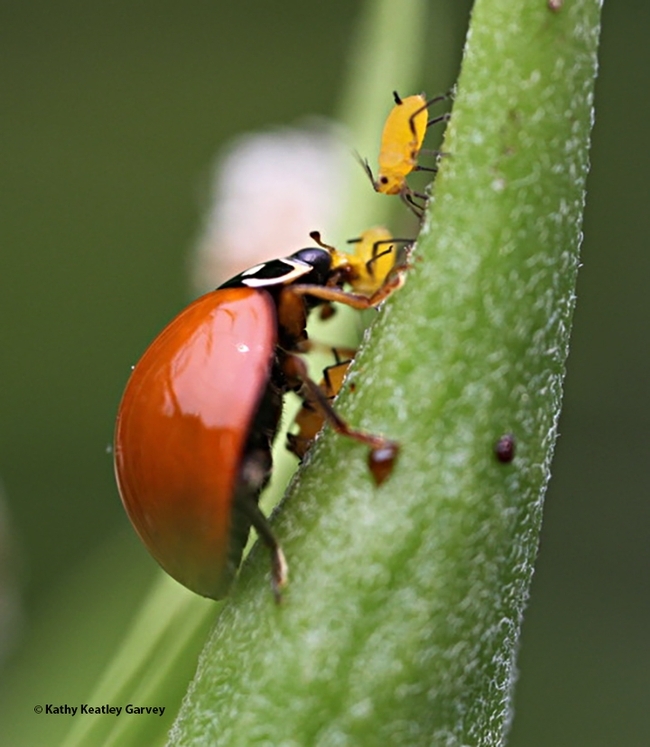
A lady beetle, aka lady bug, devouring aphids. (Photo by Kathy Keatley Garvey)
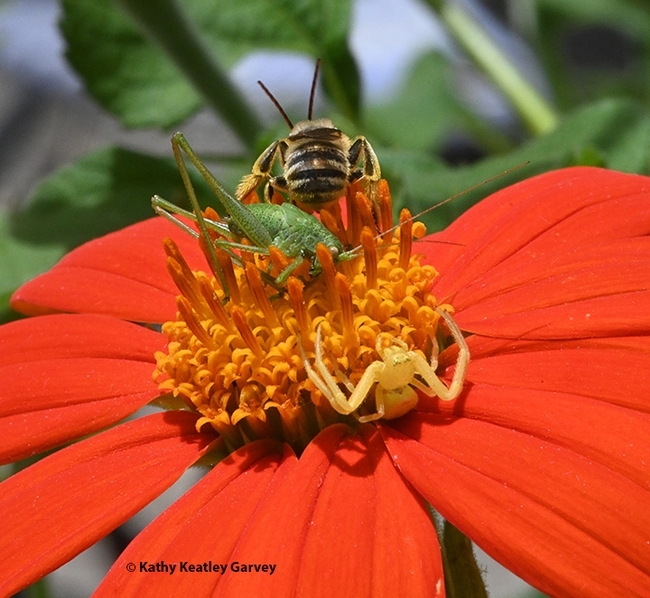
Three in one: a crab spider, katydid and a native bee. (Photo by Kathy Keatley Garvey)
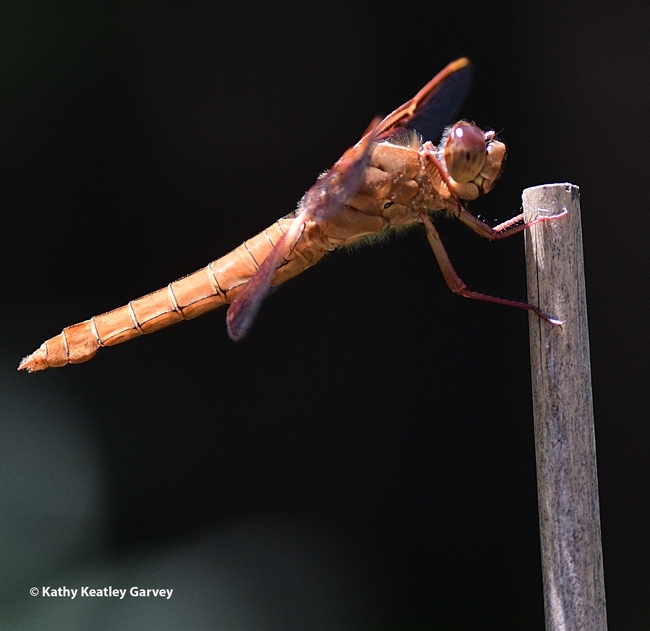
A flameskimmer dragonfly, Libellula saturata, looking or prey. (Photo by Kathy Keatley Garvey)
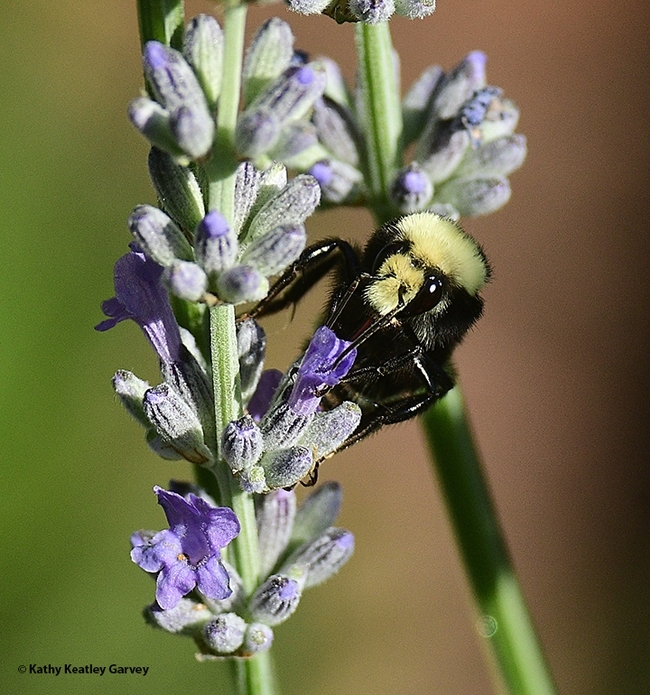
A yellow-faced bumble bee, Bombus vosnesenskii, gathering nectar. (Photo by Kathy Keatley Garvey)
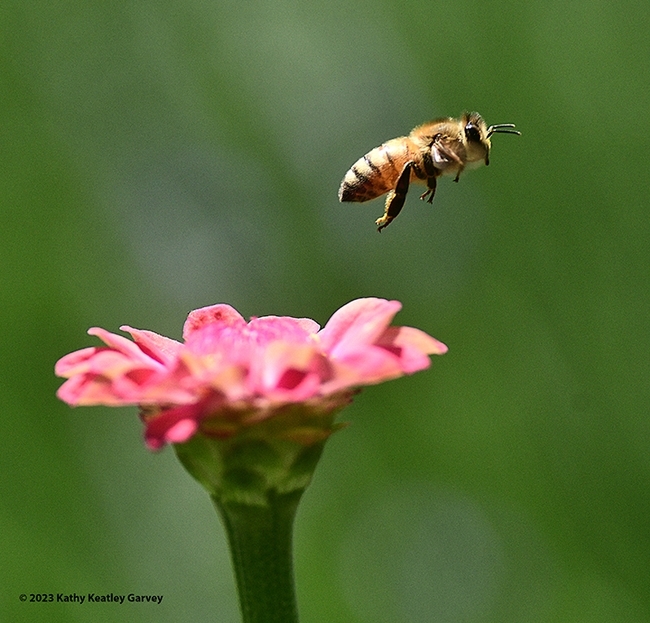
A honey bee, Apis mellifera, in flight over a Mexican sunflower, Tithonia rotundifola. (Photo by Kathy Keatley Garvey)
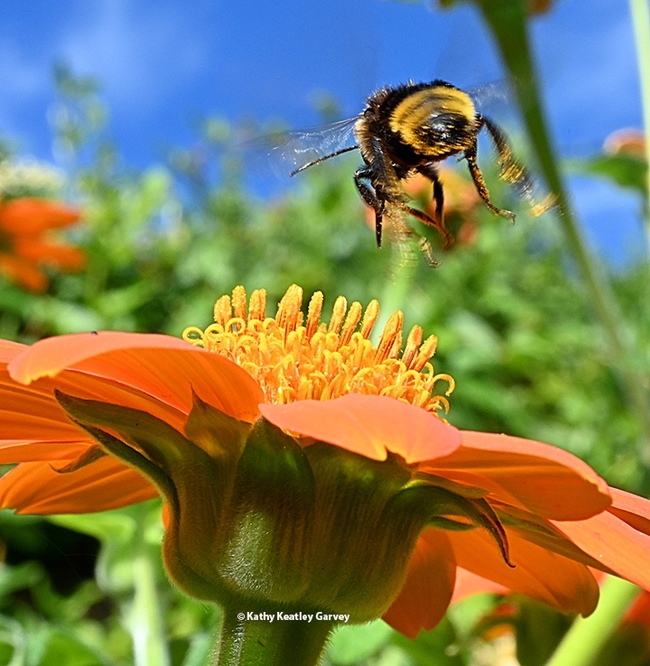
A bumble bee, Bombus californicus, leaving a Mexican sunflower, Tithonia rotundiola. (Photo by Kathy Keatley Garvey)
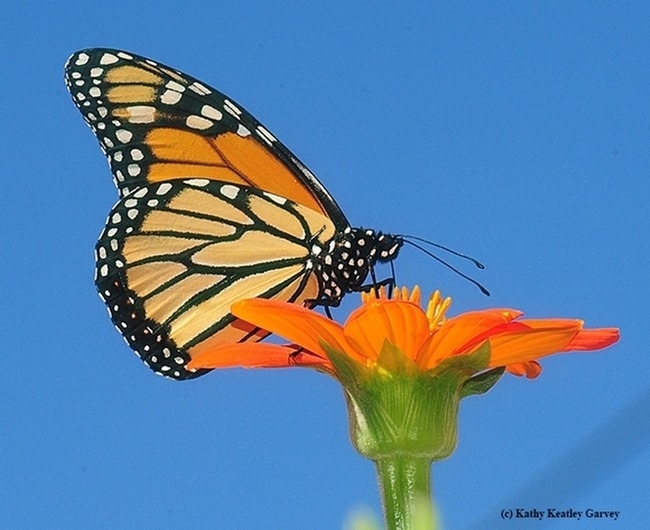
A monarch butterfly, Danaus plexippus, nectaring on Mexican sunflower, Tithonia rotundifola. (Photo by Kathy Keatley Garvey)
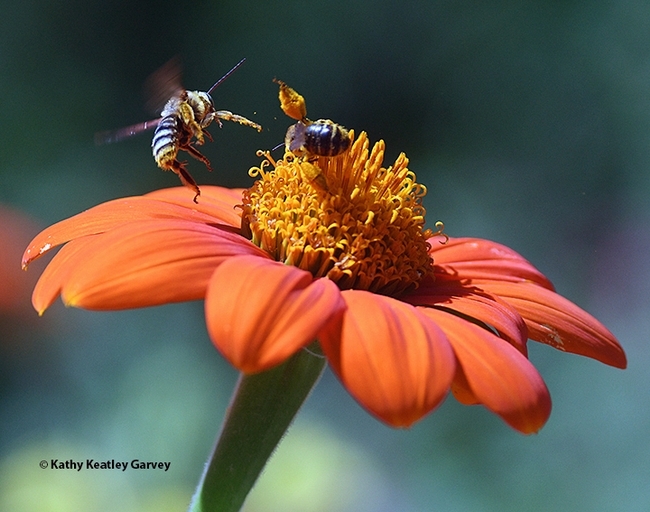
Native bees, Melissodes agilis, clash over territory. (Photo by Kathy Keatley Garvey)
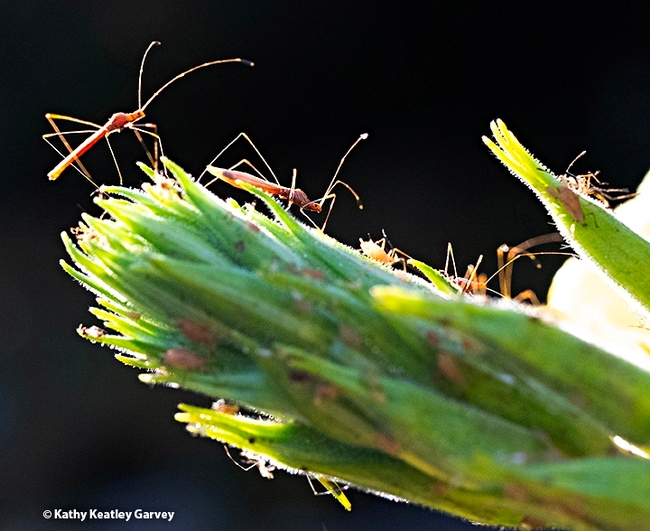
Stilt bugs, family Berytidae, order Hemiptera, infest an evening primrose. (Photo by Kathy Keatley Garvey)
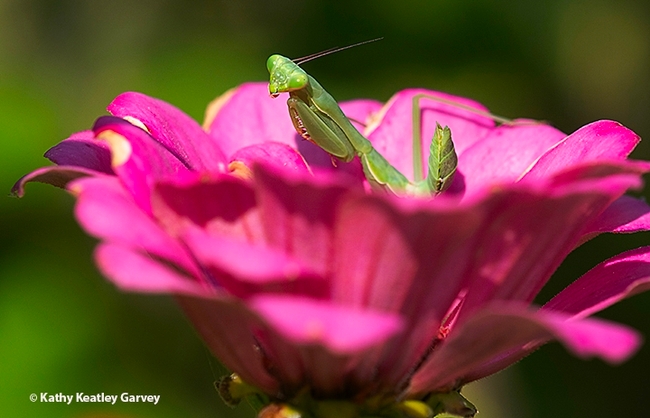
Pretty in pink? A praying mantis, Stagmomantis limbata, sits in a zinnia. (Photo by Kathy Keatley Garvey)
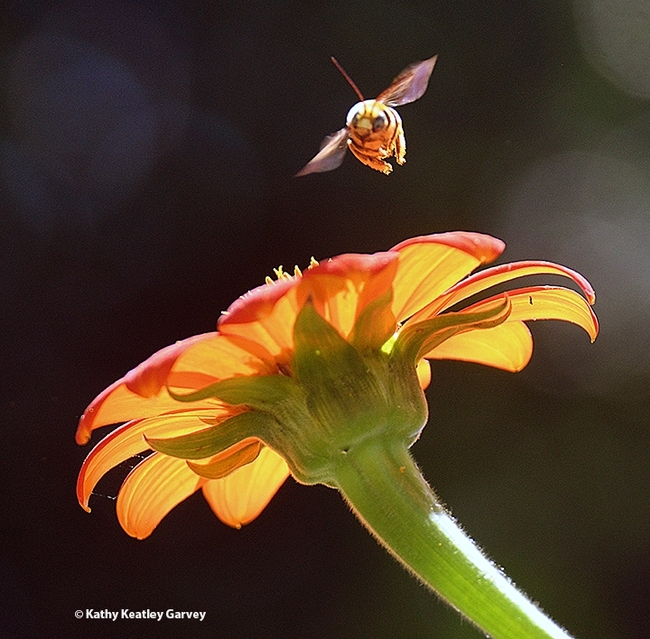
A territorial male native bee, Melissodes agilis, sails over Tithonia rotundifola. (Photo by Kathy Keatley Garvey)
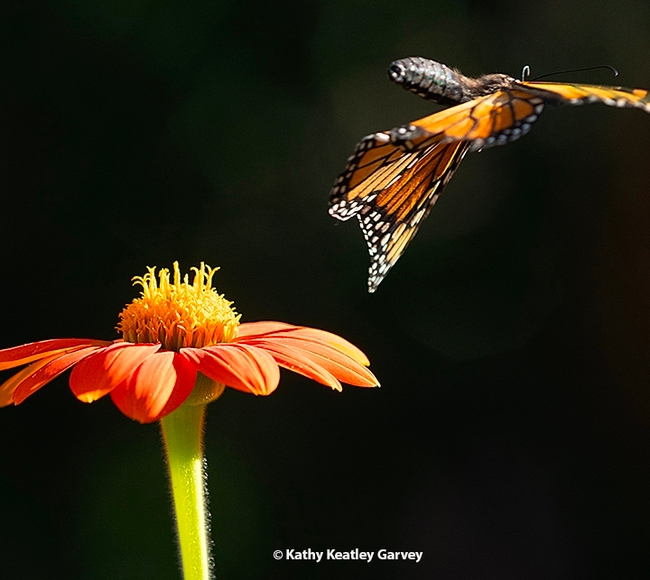
A monarch butterfly, Danaus plexippus, takes flight. (Photo by Kathy Keatley Garvey)
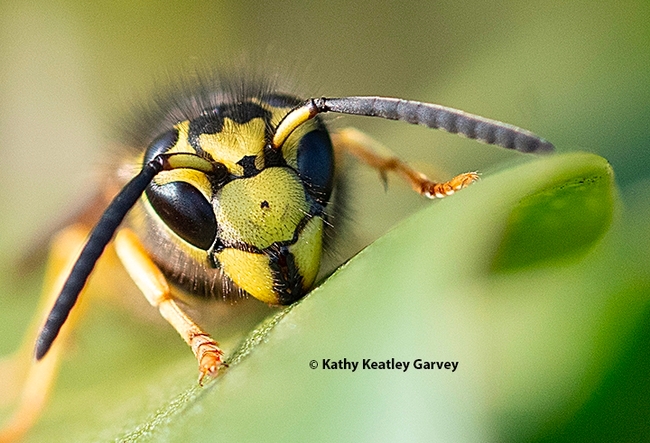
A Western yellowjacket, Vespula pensylvanica, stares at the photographer. (Photo by Kathy Keatley Garvey)
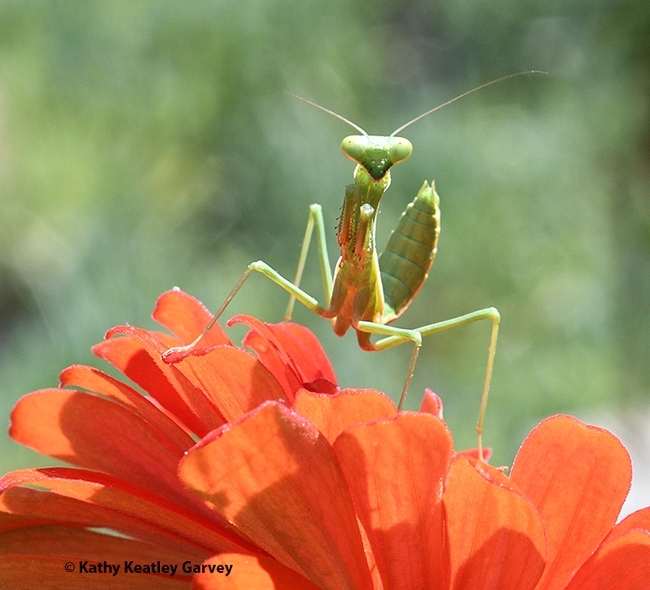
A praying mantis, Stagmomantis limbata, eyes the photographer. (Photo by Kathy Keatley Garvey)
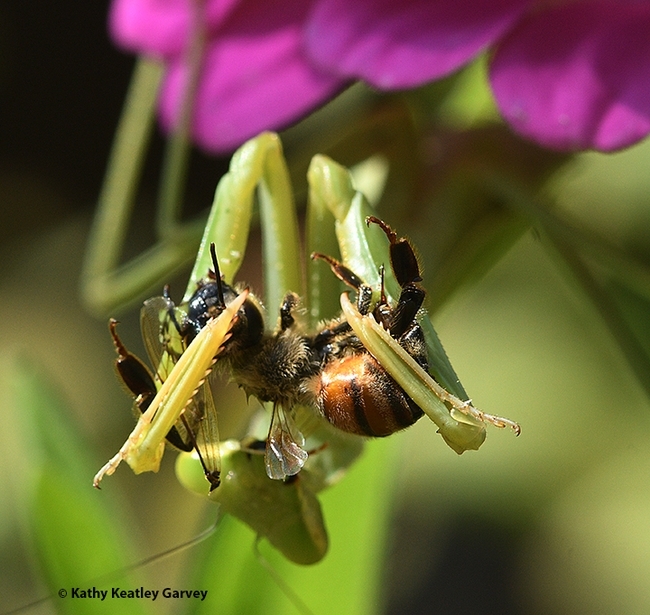
A praying mantis, Stagmomantis limbata, eating a honey bee, Apis mellifera. Everything alive must eat to stay alive. (Photo by Kathy Keatley Garvey)